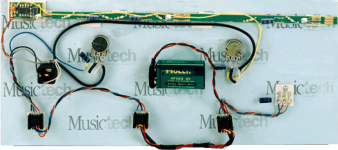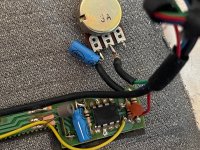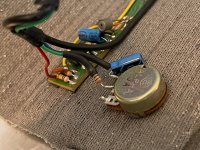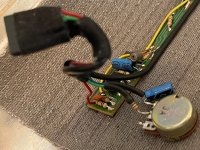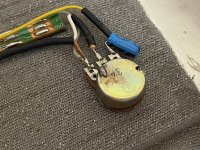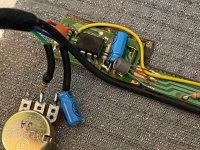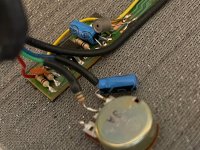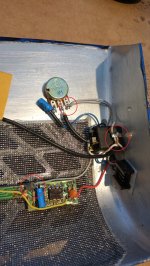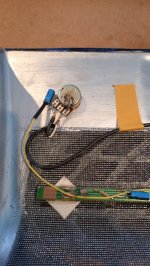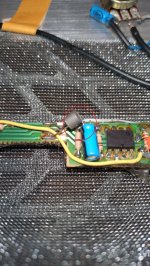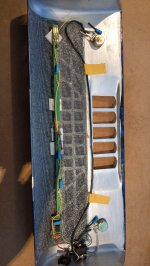Thomas N
Well-known member
Gents - After 5 years of my Excelsior 960 internal microphone system not working I decided that today would be the day I take it all apart and trace the issue. I'm reasonably technically proficient, but on a low level.
I took all of the individual parts of the accordion meticulously apart and started tracing voltage from the 9v battery in the bass side of the accordion all the way through to the treble section.
Fortunately there is a separate connector at each accordion body part junction which makes troubleshooting simple.
My biggest fear was alleviated when I had 9v all the way to the treble side of the bellows connector. No rewiring through the bellows!
There was 9v present all the way to the 1/4" instrument connector and all the way to the treble grill. The issue therefore is with the circuitry on the treble grill.
I have taken some pictures that I hope help. I immediately noticed that there is a wire missing on the connector shown in this picture. There appears to be residual solder on it which makes me think there was a wire there at some point. If it was a blank pin I wouldn't think the builder would put a drop of solder on it.
There is no wire available for connection, however. Unless it was a small jumper wire then I'm out of ideas. I tried to find pictures of this connector but was unsuccessful. Therefore I have nothing to compare it to. This system is around 20 years old.
I hope the pictures help. If anybody has any ideas it is most appreciated. Thank you!
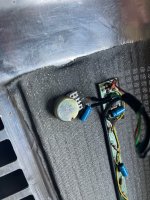
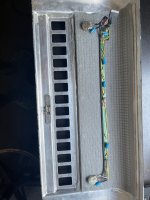
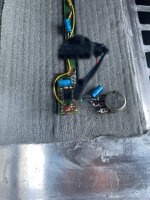
I took all of the individual parts of the accordion meticulously apart and started tracing voltage from the 9v battery in the bass side of the accordion all the way through to the treble section.
Fortunately there is a separate connector at each accordion body part junction which makes troubleshooting simple.
My biggest fear was alleviated when I had 9v all the way to the treble side of the bellows connector. No rewiring through the bellows!
There was 9v present all the way to the 1/4" instrument connector and all the way to the treble grill. The issue therefore is with the circuitry on the treble grill.
I have taken some pictures that I hope help. I immediately noticed that there is a wire missing on the connector shown in this picture. There appears to be residual solder on it which makes me think there was a wire there at some point. If it was a blank pin I wouldn't think the builder would put a drop of solder on it.
There is no wire available for connection, however. Unless it was a small jumper wire then I'm out of ideas. I tried to find pictures of this connector but was unsuccessful. Therefore I have nothing to compare it to. This system is around 20 years old.
I hope the pictures help. If anybody has any ideas it is most appreciated. Thank you!




